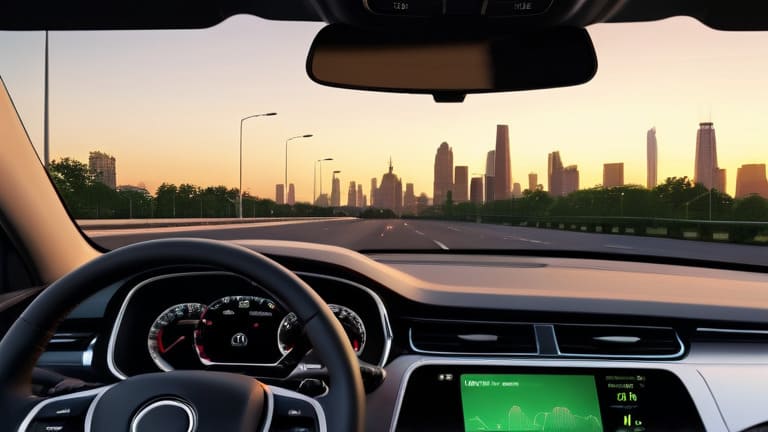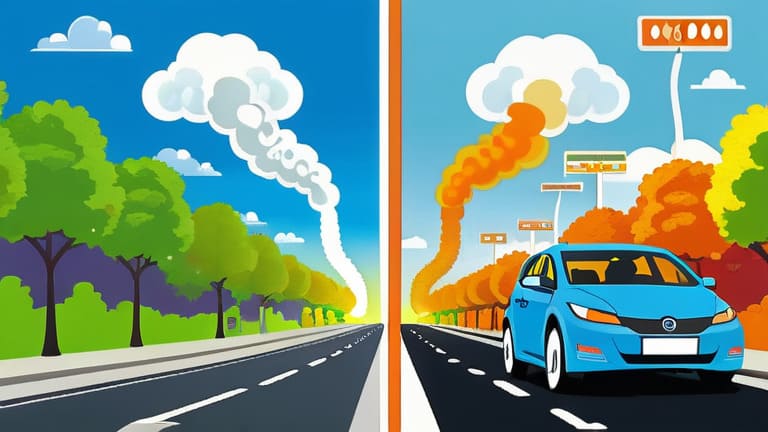
From rapidly intensifying storms to melting ice caps, vehicle emissions are one of the main culprits of these changes. On a positive note, information can change the game. By learning about the problems and crunching some numbers for your own vehicle, you gain a modicum of control over what you contribute. Our Car CO2 Emissions Calculator can take the guesswork out of understanding your contribution - and how it can be modified.
Vehicle Exhaust's Hidden Toll
Imagine this: one sedan driving around the city produces about 4.6 metric tons of CO2 each year, as estimated by the EPA. With about 280 million cars on U.S. roadways, that's a lot of greenhouse gases (over a billion tons) emitted by transportation (around 30% of national totals). In fact, transportation accounts for 24% of global emissions, according to this year's Intergovernmental Panel on Climate Change (IPCC) report. CO2 does not just sit there: it acidifies oceans, creating ghost towns of coral reefs and disrupting local fisheries that feed millions of people.
It affects humans closer to home as well, since exhaust can fill the air with fine particles in urban centers, creating greater rates of asthma and heart disease. A 2023 study published in The Lancet notes there are about 8 million premature deaths annually due to road pollution worldwide. There are some positive signs, such as electric vehicles and hybrids taking market share, but the majority of cars are still fuel driven. That drive to drop kids off at school in the morning? It is just one part of the cumulation of miles contributing to wildfires happening fairly far away or flooding that is swallowing homes in coastal neighborhoods.
The realization is painful, but it is an important step toward one day changing. Members of the Ride Anywhere program collect their impact data on individual outputs, and many change life practices, such as deciding to use a carpool application instead of driving by themselves, more than 20% on average.

Carbon Footprint Basics
At its most fundamental level, a car's carbon footprint calculates the CO2 impact from burned fuel over distance traveled. The math is simple: gallons of gasoline times 8.887 pounds of CO2 per gallon equals the number on your tally. If you evaluate the emissions from production and refining, that number keeps climbing. Real life complicates the answer - rolling in traffic, driving a hill, or speeding all merely mean you will burn even more fuel and create more CO2.
So why do it? Because there can be surprises. If you drive enough, that "efficient" SUV may be belching out more than compacts you see on the road. The Union of Concerned Scientists indicate average U.S. drivers ignore around 15 percent of their impact by not recognizing these maintenance impacts. Changing a dirty air filter creates even more of a drag on the engine. How much, you ask? Hopefully, quantifying the reduction will offer insights that can lead to better decisions - there is no drag if no one is in the vehicle. Or route based apps may just help you towards lower usage (<10- 15%). It will never be perfect, its progress, one informed kilometer at a time.
Spotting Emission Red Flags
Not all engines are equally at fault. It is important to realize that earlier models, particularly those manufactured prior to 2010, record less fuel economy than more recent models and produce up to 25% more CO2 due to lower manufacturing standards. Diesel trucks also contribute significantly because of black carbon particles that contribute to the warming of the climate. Depending on how "stop-and-go" the traffic, hybrids are terrific in these situations, while electric-only vehicles do not produce tailpipe emissions but may offset their total footprint if powered by coal-heavy power grids.
The lifestyles of those using vehicles can also skew emissions' data. Long-distance commuters will likely have a much larger footprint than someone just commuting to a friend's house on a weekend. A van carrying several soccer players, gear, and families will have double the footprint of someone making a quick run to the store for milk. Our app accounts for all of this info in terms of vehicle type, miles driven, and even blend of fuel in the tank. Anecdotally, we have seen users of the app confronted with eye-opening emissions profile on specific trip metrics- one driver discovered that driving his "eco" airport sedan to work was resulting in bigger footprints than his neighbor driving an EV, only because of the open freeway driving pattern he established!

Calculator Quick Guide
Our Car CO2 Emissions Calculator is designed for the consumers, not the connoisseurs. It uses EPA efficiency data to run some emissions conversions and give you your yearly tonnage. Want to do more? Flip some switches to grumble about local energy mixes on your EV wish list or simulate changes like a bus swap.
To quickly decrease your score, consider the following:
- Review your annual driving - Track a week's worth of drives with the app, find the weekly mileage and multiply by 52, and enter the numbers back into the calculator to see your baseline.
- Test out maintenance - Inflate all your tires to the manufacturer's recommended amount; change out a few filters in the vehicle. After that, check out the new numbers from the calculator; you'll usually see a bump between 3-5% just by doing this.
- Experiment swapping out vehicle types - Enter in your vehicle mileage as if you were driving a hybrid, or electric vehicle. See how this shifts. Use any available rebates for doing so, linked here.
- Mix in alternatives - Count a couple of days you're on public transit, or biking as opposed to driving. Reroute your driving behavior as, you will usually be able to save about 10%. Only if you drive a vehicle the other times.
- Measure monthly shifts - re-enter your miles in the calculator, once every three months. Notice how many tons spent.
Forward to Lighter Drives
Reducing tailpipe emissions can turn emerald shoots into boundless shade. Regulations nudge you along with incentives - credits for California clean vehicles deploying tanks to wires. But your ledger has to say. This method skips embarrassment for strategy, and tracks less sorrowful, breezier paths with little dislocation in the rest of your life.
Imagine alternatives that reduce your trace - less is less, but more provides milder warmth, breathable air, and usable habitat. Act now - key your agricultural keys. What does your inventory tell you? What you spend now, even small, can yield more relational traction down the line. Roll with less, air with ease.